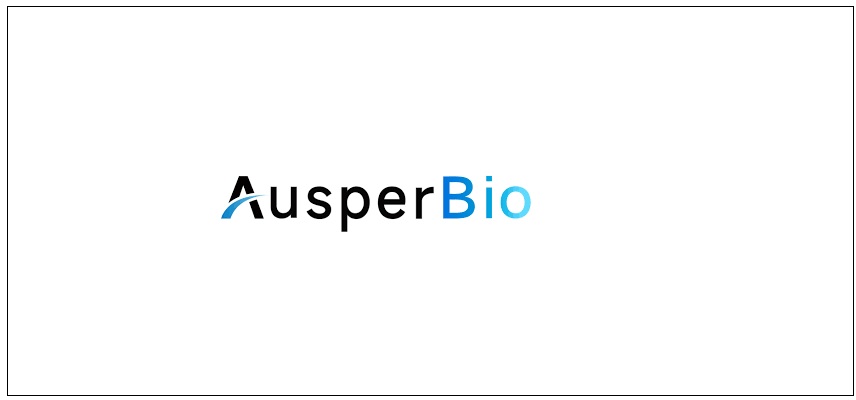Bayer’s Phase III FINEARTS-HF Cardiovascular Outcomes Study of Finerenone Meets Primary Endpoint
Overview
The phase III study FINEARTS-HF, evaluating the efficacy and safety of finerenone versus placebo when added to usual therapy in patients with heart failure (HF) and a left ventricular ejection fraction (LVEF) of greater than or equal to 40%, has met its primary endpoint. The results showed that finerenone (Kerendia) achieved a statistically significant and clinically meaningful reduction of the composite of cardiovascular death and total (first and recurrent) HF events, defined as hospitalizations for HF or urgent HF visits. Finerenone was well-tolerated in the FINEARTS-HF study, which is consistent with the well-established safety profile of finerenone.
About Heart Failure
- Heart failure (HF) is a chronic condition characterized by the progressive decline in the heart’s ability to fill with and pump enough blood to supply the body’s needs.
- It affects over 60 million people worldwide.
- Approximately half of these patients suffer from HF with a LVEF of =40%. HF with a LVEF =40% is associated with multimorbidity, with as many as 50% of patients having five or more significant comorbidities, making the condition complex to manage.
- Time trends suggest this growing population will soon account for the majority of patients hospitalized with HF.
Finerenone
Finerenone is a non-steroidal, selective mineralocorticoid receptor (MR) antagonist. By targeting MR and renin-angiotensin-aldosterone system (RAAS) overactivation, finerenone addresses hallmarks of HF with a LVEF =40%, such as progressive fibrosis.
From Bayer’s Pharmaceuticals Division
- We are very excited by the positive results from the FINEARTS-HF study,” said Dr. Christian Rommel, head of research and development at Bayer’s Pharmaceuticals Division.
- With limited options currently available for patients with this common form of heart failure with a mildly reduced or preserved ejection fraction, this news is hugely important for patients and the clinical community. We are looking forward to sharing the data at ESC Congress 2024, and are eager to bring finerenone to eligible patients as soon as possible.
Bayer will discuss the data with health authorities regarding submission of marketing authorization application.
FINEARTS-HF Study
- FINEARTS-HF is a randomized, double-blind, placebo-controlled, multicenter, event-driven phase III study investigating the efficacy and safety of finerenone (Kerendia) for the prevention of cardiovascular death and heart failure (HF) events in patients with a diagnosis of symptomatic heart failure (New York Heart Association class II-IV) with a left ventricular ejection fraction (LVEF) of =40%, measured by any modality within the last 12 months as well as receiving diuretic treatment for at least 30 days prior to randomization.
- The primary endpoint of FINEARTS-HF was the composite of cardiovascular death and total (first and recurrent) HF events, defined as hospitalizations for HF or urgent HF visits.
Around 6,000 patients were randomized to receive either finerenone or placebo once daily for up to 42 months.
MOONRAKER Clinical Trial
With overall more than 15,000 patients, the ongoing MOONRAKER clinical trial programme with finerenone, including FINEARTS-HF, is one of the largest HF study programmes to date, and aims to establish a comprehensive understanding of finerenone in HF across a broad spectrum of patients and clinical settings.
Protected Trademarks
- Kerendia and Firialta are globally protected trademarks for finerenone.
- Finerenone is a non-steroidal, selective mineralocorticoid receptor (MR) antagonist that has been shown to block harmful effects of MR overactivation.
- MR overactivation contributes to chronic kidney disease (CKD) progression and cardiovascular damage which can be driven by metabolic, hemodynamic, or inflammatory and fibrotic factors.
Finerenone’s Marketingname in Different Countries
Finerenone is marketed as Kerendia or, in some countries, as Firialta, and approved for the treatment of adult patients with CKD associated with type 2 diabetes (T2D) in more than 90 countries worldwide, including in China, Europe, Japan, and the US.
The FINEOVATE Programme
- The study programme with finerenone, FINEOVATE, currently comprises ten phase III studies with dedicated programs in HF and CKD respectively.
- The MOONRAKER program includes FINEARTS-HF, as well as the ongoing collaborative, investigator-sponsored studies REDEFINE-HF, CONFIRMATION-HF, and FINALITY-HF.
- The THUNDERBALL CKD programme consists of the completed studies FIDELIO-DKD and FIGARO-DKD, as well as the ongoing studies FIND-CKD, FIONA, FIONA-OLE, FINE-ONE, and the phase II study CONFIDENCE.
Heart Failure: Epidemiology, Symptoms Mortality Rate
- Heart failure is a complex clinical syndrome, characterized by a progressive decline in the heart’s ability to fill with and pump enough blood to meet the body’s needs for blood and oxygen.
- HF affects more than 60 million people worldwide and is the leading cause of hospitalization in people over 65.
- Prevalence of HF is projected to increase drastically over the next decade, partly as a consequence of the ageing population.
- Patients with HF face a poor prognosis, with mortality rates similar to or worse than the most common cancers.
- HF can be complicated by several comorbidities, with more than half of patients living with conditions such as obesity, chronic kidney disease, diabetes mellitus, hypertension, and/or atrial fibrillation.
- Symptoms of HF may include dizziness, shortness of breath, fatigue, sleep disturbance, chest discomfort, edema (swelling of feet and legs), and chronic coughing or wheezing.
Risk Factors
- Risk factors include hypertension, diabetes mellitus, smoking, a past myocardial infarction, and coronary artery disease.
- Despite advances in treatment, around 30% of people diagnosed with HF die within one year, increasing to around 40% after five years.
HF Categories
When categorized by left ventricular ejection fraction (LVEF), which is a measure of cardiac function indicating how much blood the left ventricle pumps out with each contraction, HF is divided into three different categories:
- Heart failure with reduced ejection fraction (HFrEF) is characterized by the compromised ability of the heart to eject oxygen-rich blood sufficiently during its contraction phase, where LVEF is =40%.
- Heart failure with mildly reduced ejection fraction (HFmrEF) is a category for patients whose LVEF is between 41 to 49% and who have some impairment in the heart’s ability to pump.
- Heart failure with preserved ejection fraction (HFpEF) is a condition characterized by stiffness of the heart, leading to filling abnormalities as the left ventricle is unable to relax sufficiently to fill with blood, where LVEF is =50%.
LVEF & Hospitalization
- While LVEF <40% and LVEF =40% each account for approximately half of all HF cases, the burden of CV and non-CV comorbidities is higher in patients with LVEF =40%.
- Time trends also suggest that LVEF =40% will soon account for the majority of patients hospitalized with HF.
- While advances in therapy have been achieved in HF with LVEF <40%, there are limited treatment options for HF with LVEF =40%.
About Bayer
- Bayer is an innovation leader in the area of cardiovascular diseases, with a long-standing commitment to delivering science for a better life by advancing a portfolio of innovative treatments.
- The heart and the kidneys are closely linked in health and disease, and Bayer is working in a wide range of therapeutic areas on new treatment approaches for cardiovascular and kidney diseases with high unmet medical needs.
- The cardiology franchise at Bayer already includes a number of products and several other compounds in various stages of preclinical and clinical development.
- Together, these products reflect the company’s approach to research, which prioritizes targets and pathways with the potential to impact the way that cardiovascular diseases are treated.

Optimize Your trial insights with Clival Database.
Are you exhausted from the uncertainty of trial insights pricing? Clival Database ensures the clarity in the midst of the global scenario for clinical trials to you.Clival Database is one of the best databases that offers an outstanding number of clinical trial data in terms of 50,000+ molecules and from primary regulatory markets as well as new entrants like Indian and Chinese markets.
With Clival, you get accurate positioning of historical sales data, patent database, company profiling, safety & efficacy, and prediction of launch of new innovative molecules helping you to align your research and driving down the cost.
To add value, we further break down our analytics for you so that improving your operational effectiveness; optimizing your clinical trials; and offering you accurate and high-quality data at lowest possible prices becomes possible.
Elevate your trial success rate with the cutting-edge insights from Clival database.
Check it out today and make more informed sourcing decisions! Learn More!







